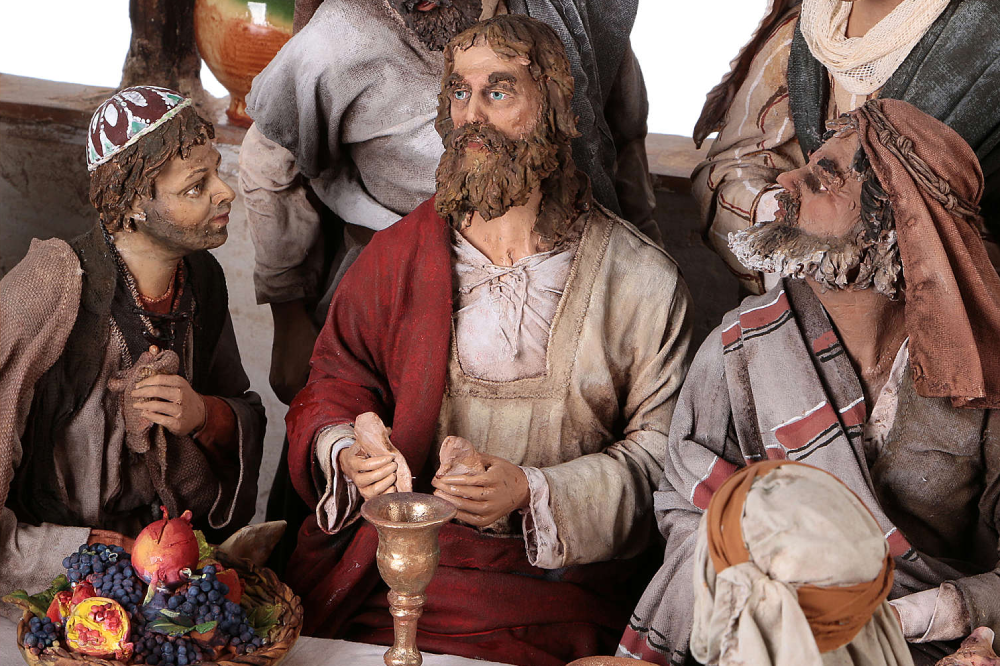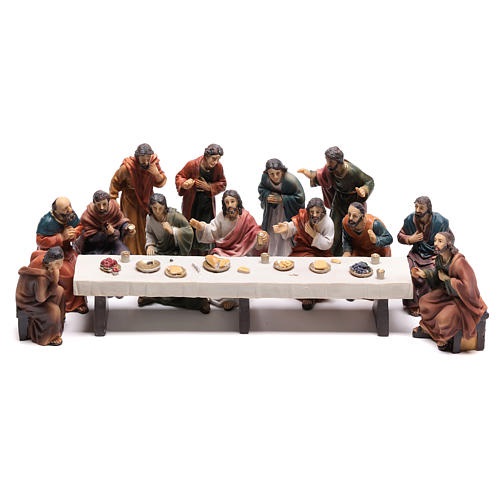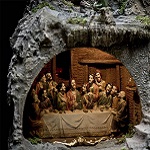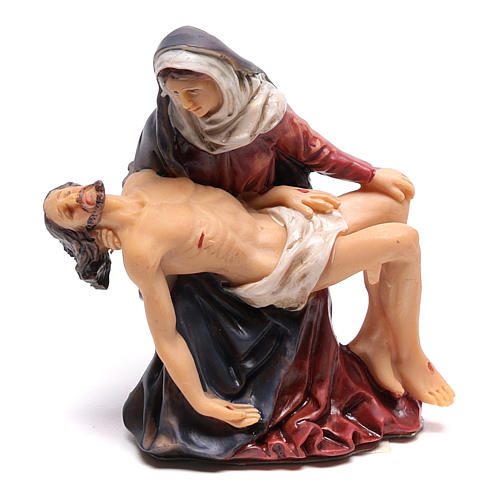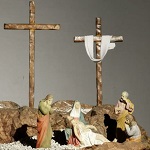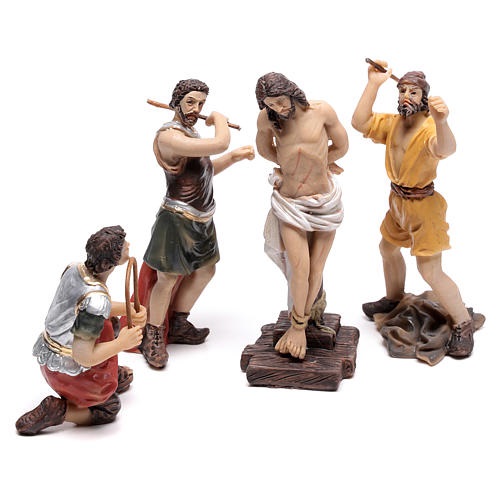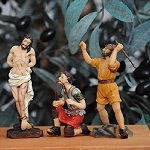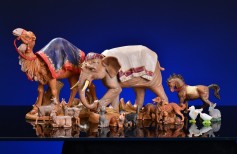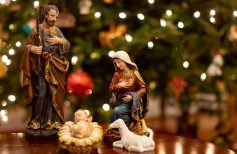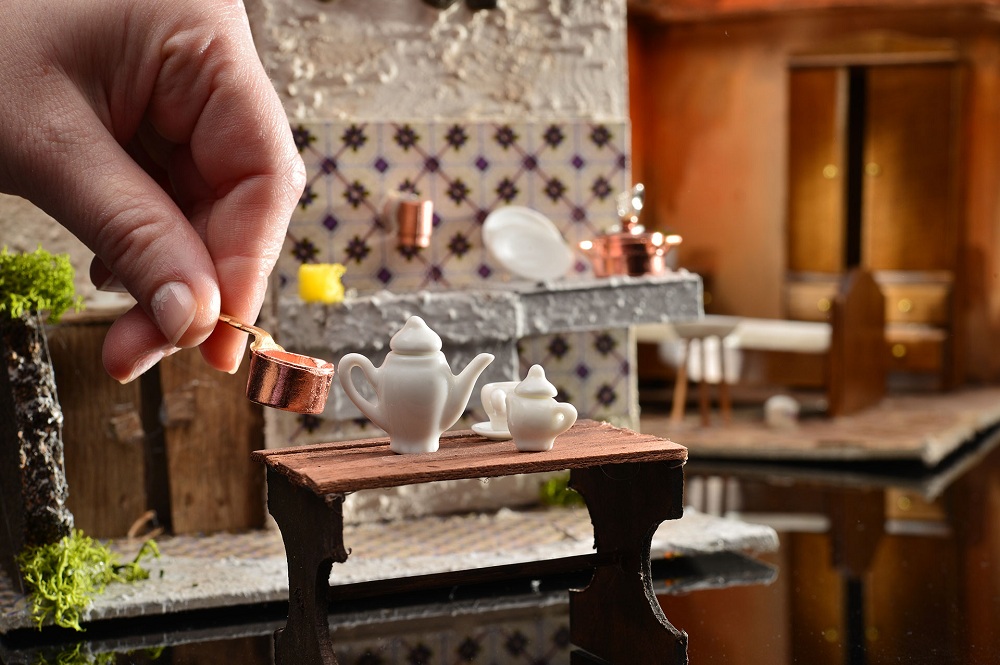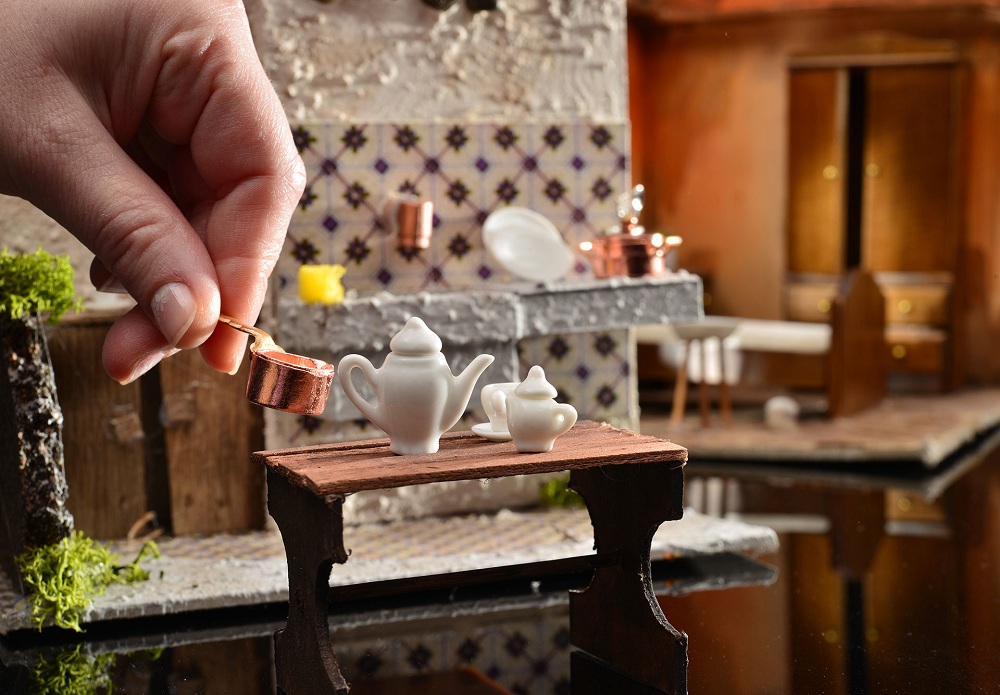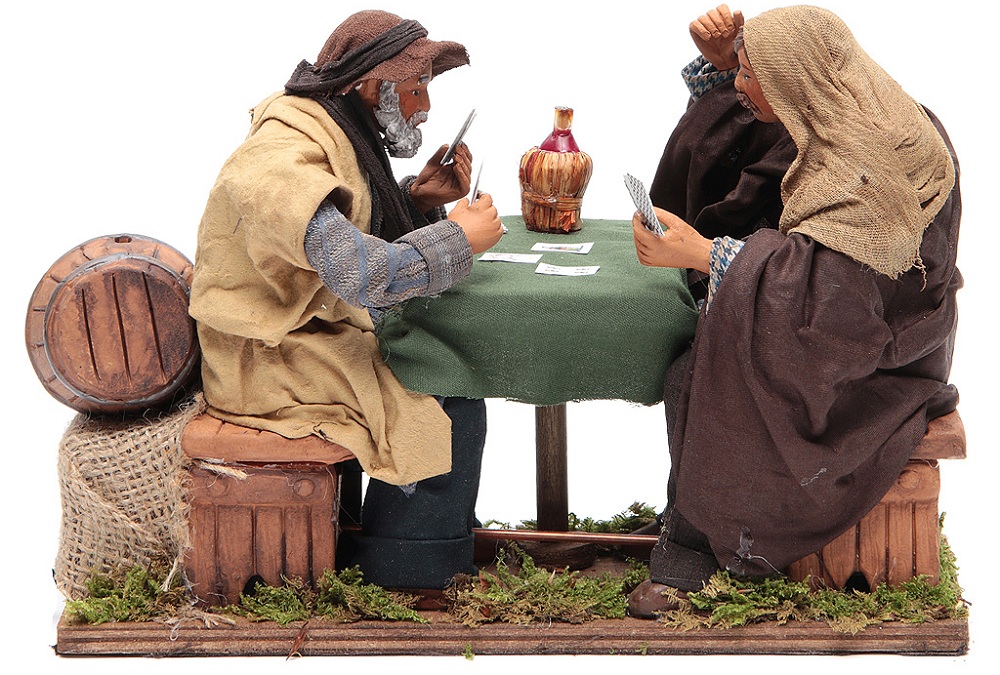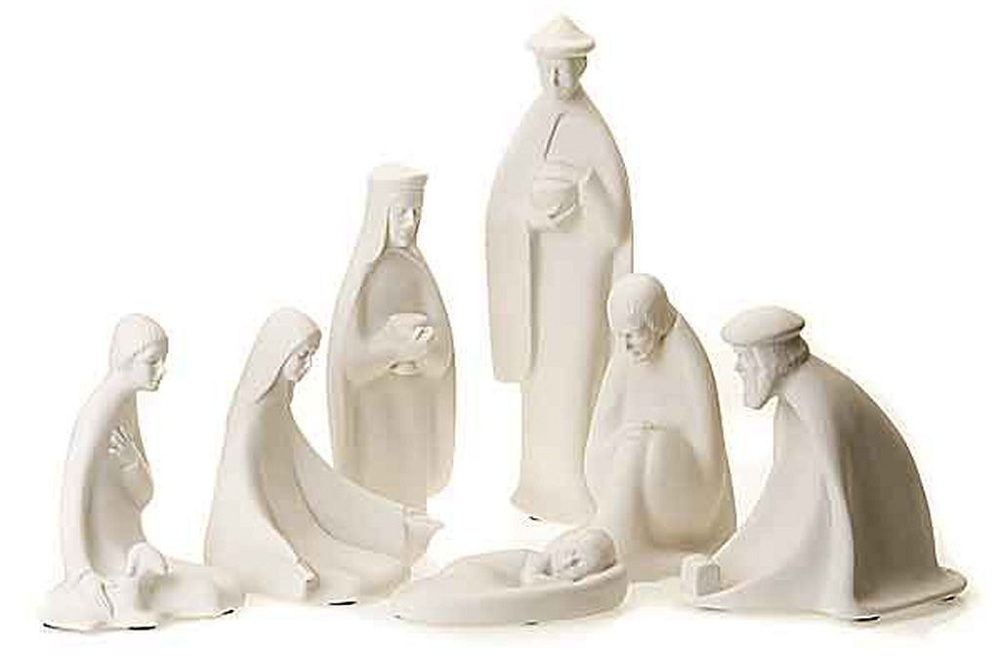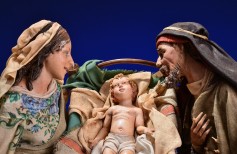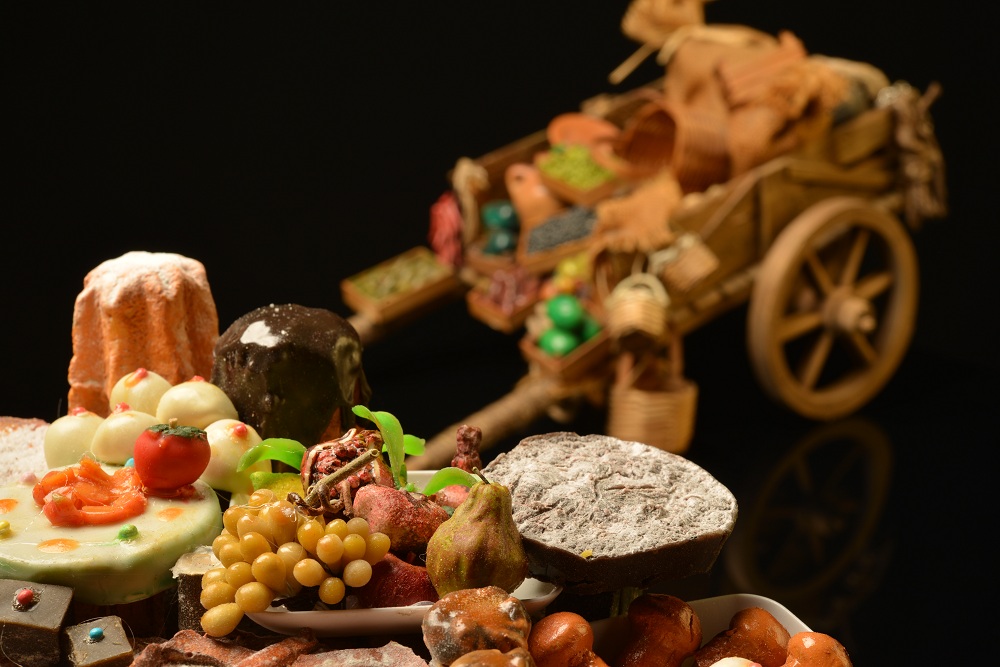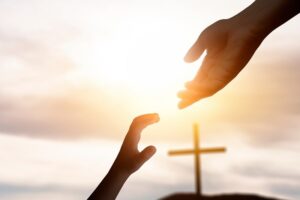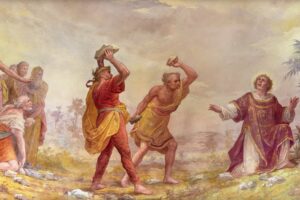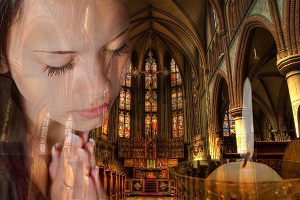Easter Nativity? Of course! In our country, it is an ancient and much-loved tradition. But when should it be set up? What are the characteristic figurines? Let’s find out together.
Contents
We have all known the classic nativity scene since we were children, for what is done at Christmas. It represents the Nativity of Jesus, often placed within an urban or rural context, according to tradition, enriched by the presence of shepherds, peasants, food vendors, musicians, animals. And in the centre, the hut or cave, with the Madonna, St. Joseph and the little Jesus in a manger, warmed by the breath of the ox and the donkey.
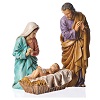
In certain representations of the Christmas crib in ancient times, other episodes related to the birth of Jesus were also mentioned, but temporarily distant from it, such as the Annunciation.
However, the nativity scene is traditionally only the representation of the Nativity, as its very name suggests. We remember that Nativity comes from the Latin praesaepe, that is crepe, manger. The manger in which Baby Jesus was placed after birth.
So what gave rise to the idea of creating an Easter crib, which, at this point, should not even have this name? The two scenes, Christmas and Easter, share the same origin, that is, the need to make visible and understandable to the majority of people, people and peasants, unable to read and fully understand the Sacred Scriptures, the sacred events and the events related to the life and death of Jesus. A type of popular devotion, therefore, that takes us back to the sacred performances and before that to the dramatic lauds, already widespread in our country in the fourteenth century, real theatrical performances of the religious theme set up to tell the ordinary people, who did not know Latin, episodes of the life of Jesus or Our Lady, and other edifying stories. This type of representation also had the advantage of involving all those who attended it, relying on spirituality and popular pietas. Let us remember that the Christmas crib itself was born as a living crib, with this didactic purpose and dissemination of truths otherwise destined to remain the prerogative of the few scholars. And, as after the introduction of the living crib, artisans and artists began to model statues that represented the Nativity, until giving life to the Italian crib tradition that we all know, it is presumable that in the same way, they began to recreate scenes of the Passion and death of Jesus, from the last supper to meditation in the garden of Gethsemane, to the judgment of Pilate, up to the crucifixion, burial and resurrection.
We can also link the birth of this tradition of Easter scene with that of the Way of the Cross, born to make it impossible for many of the faithful to go on pilgrimage to the real places of the passion and death of Christ. Thus, by reconstructing within the churches and places of worship the various stations of this painful Way, in the form of paintings, sculptures, and other representations, it was given the opportunity to anyone to be part of those terrible moments of great spiritual impact.
The fundamental difference between the Christmas crib and the Easter scene is that the first prepares us for the birth of Jesus, and for this reason, the atmosphere it arouses is yes of mystery and solemnity, in front of the Incarnation, but also and above all of the joy. The Easter scene prepares us instead for His death, and in this way makes us aware of how ephemeral our existence is, without God, how short our experience in life, compared to what awaits us in Heaven.
Why make an Easter scene at home
This is why many families still choose to make an Easter scene at home. It is a form of devotion, a way to prepare for Easter, and this is why the Easter scene is set up during Lent, the period before Easter, characterised by penance, prayer and reflection. Therefore, to prepare it in time, it is essential to know how the date of Easter is established.

How is Easter calculated?
Each year changes date but remains the most important holiday: in this article, you will find out how Easter is calculated in the Jewish and…
We have often focused on how the setting up of the Christmas crib is a moment of communion and harmony for the family. In the same way, the Easter scene can become a way of sharing Lent, building together something beautiful that keeps everyone engaged and, at the same time, offers moments of meditation and common prayer.
This dimension of common devotion is emphasised by the fact that the Easter scene should be realised as a progressive setting. That is, it is not necessary to arrange all the scenes immediately, but it is much better to add them as you approach Easter, week after week. The Resurrection of Jesus will be the last scene that we will realise, the most important, the most precious, the most solemn.
Easter Nativity statues
We can start with scenes from the life of Jesus, such as his baptism by John the Baptist, the washing of the feet, or even the healing of the blind, and then arrive at the entrance of Jesus in Jerusalem, and so on.
From here the history linked to the Easter period unfolds, from the Last Supper to prayer in the garden of Gethsemane, from the Arrest of Christ to the Flagellation, to the Crowning with thorns, and then the culmination, the Crucifixion, death and the Deposition from the Cross, and of course the highest and special moment for Christians: the Resurrection.
Meaning of Easter
This is not the place to dwell on such a complex and broad topic as the meaning of Easter for Christians. In fact, we are talking about the most important solemnity of Christianity, the feast of all feasts, which recalls the Resurrection of Jesus.
And there is more. The death and resurrection of Christ represented the beginning of a new world, of a New Covenant between God and men, which will culminate at the end of time, when the Kingdom of God will be opened for those who have deserved it.
Easter contains all the solemnity and mystery of the Christian religion, of how Jesus sacrificing himself for men freed them from original sin, and overcoming death with the resurrection gave hope of eternal life to all, waiting for the new coming.
DIY Easter Scene
Apart from the statuettes, which can be found in our online store, to set up your Easter scene you will have to think about how to create settings and sets. Indeed, you can easily reuse the rural and urban scenery that you already use for the Christmas crib. And as for the Christmas crib, we have always provided good advice for DIY solutions, also, in this case, we suggest you use recycled materials and a bit of inventiveness, to make your set-up experience even more interesting and uplifting. Cardboard, plywood, a little hot glue, and your imagination will allow you to recreate the ideal setting to give life to your very special Easter scene.

How to build a DIY nativity scene: a mini guide
We talk about Christmas again. Lights, decorated trees, all the symbols we love so much, which comfort our hearts with the hope…

